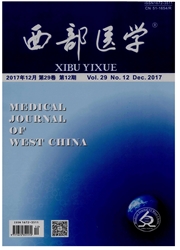

 中文摘要:
中文摘要:
目的 构建shAk2基因慢病毒表达载体,获得稳定干扰Akt2基因的细胞克隆,建立靶向沉默Akt2的非小细胞肺癌稳定细胞株,并探讨Akt2基因在非小细胞肺癌中的作用。方法 根据shRNA干扰序列设计原则,设计并合成针对Akt2靶基因的双链寡核苷酸序列,经退火、酶切、连接反应,将干扰序列插入pLKD.CMV.GFP.U6质粒,经感受态细胞转化、阳性克隆测序鉴定所插入的片段,抽提重组质粒及辅助包装元件载体质粒p-Helper1.0和p-Helper2.0,通过阳离子脂质体lipofectemin2000介导细胞转染及慢病毒包装,收集浓缩病毒进行滴度测定,感染至人肺腺癌细胞H292,通过无菌流式细胞分选GFP强阳性细胞,应用Western-blot验证干扰效果。CCK-8比色法检测细胞增殖,Annexin V.FITC/PI双染法检测细胞凋亡。结果 与正常对照组比较,shAkt2组细胞中Akt2蛋白水平减少90.89%,提示靶向抑制Akt2的慢病毒shRNA表达载体构建成功,并获得稳定抑制Akt2基因表达的细胞克隆。CCK-8法检测细胞增殖能力,shAkt2组细胞在48h,72h,96h及120h的吸光度值明显减低(P〈0.05),干扰Akt2基因表达后显著抑制细胞增殖速率。采用Annexin-V/7-AAD流式细胞分析法检测各组中凋亡细胞的比例,shAkt2组凋亡率显著高于NC及NSCLC组(P〈0.05)。结论 靶向干扰Akt2基因表达可抑制肺腺癌细胞株H292细胞的增殖能力,促进其凋亡。
 英文摘要:
英文摘要:
Objective To construct the lentivirus shRNA vector targeting Akt2 and observe the biological behav- iors of NSCLC cell lines after Akt2 knockdown and intensify the downstream regulation mechanisms in NSCLC. Methods Sequences for targeting the Akt2 gene was selected. The double strand shRNA oligo was ligated to pLKD. CMV. GFP. U6 lentivirus vector. The construct was verified by sequencing. The viral particles were collected and infected NSCLC cells. After selection of GFP positive cells by FACS, protein expression levels of Akt2 were determined by Western blot. The study was divided into 3 groups, including shAkt2 cells, negative control (NC) and NSCLC normal control groups. Cells were characterized in vitro using proliferation assay and apoptosis analysis. Results shAkt2 stable transfected cells were purified by FACS with GFP marker. The ratio of selection was 90%-95%. Efficacy of Akt2 knockdown was deter- mined by western blot. Our data showed that protein expression level of Akt2 was inhibited by 90% compared with con- trol groups, and Stable knockdown of Akt2 in NSCLC cells was successfully established. Knockdown of Akt2 in NSCLC cells significantly inhibited cell proliferation and promoted cell apoptosis in H292 cell lines (all P〈0.05). Conclusion ShAkt2 could significantly inhibit the Akt2 expression levels in H292 cell lines. Akt2 plays a pivotal role in NSCLC cell differentiation, growth. These results supply new potential therapeutic target for NSCLC intervention.
 同期刊论文项目
同期刊论文项目
 同项目期刊论文
同项目期刊论文
 期刊信息
期刊信息
